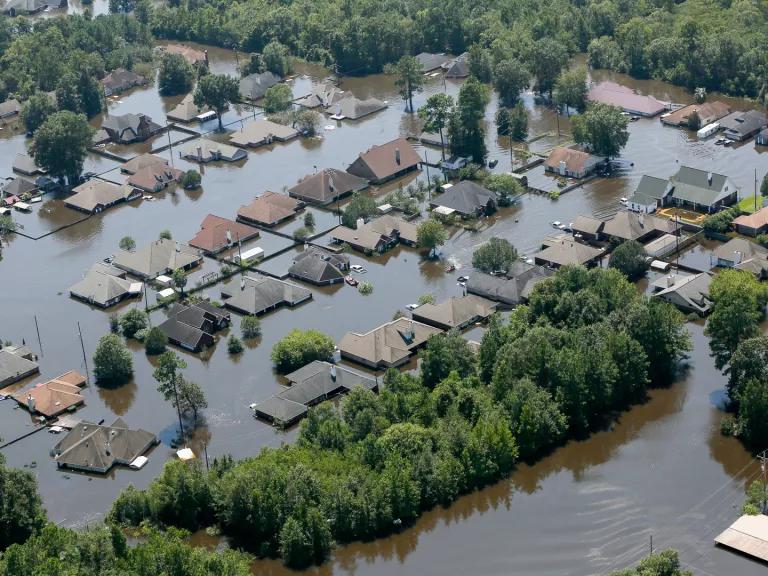September 20, 2023
The Interplay Between Climate Change and Flooding

The Interplay Between Climate Change and Flooding: Examining Contributing Factors
Introduction:
- The month of September witnessed devastating floods in eight different countries, reigniting discussions about the role of climate change in such catastrophic events.
- While the connection between floods and climate change is complex, recent incidents underscore the urgency of understanding this relationship.
Climate Change and Floods
- Amplifying Precipitation Intensity: Rising global temperatures lead to increased evaporation, allowing the atmosphere to hold more moisture. For every one-degree Celsius rise, there’s a 7% surge in moisture capacity. This intensifies storms, resulting in heightened precipitation, duration, and frequency, ultimately culminating in severe flooding.
- Rising Sea Levels: Higher temperatures contribute to glacial and ice sheet melting, elevating sea levels. This, in turn, places coastal regions at a greater risk of flooding, leading to more frequent and destructive storm surges.
Challenges in Attributing Floods to Climate Change
- Limited Historical Records: Scarce historical data, especially for the most catastrophic floods, complicates efforts to directly attribute them to climate change.
- Multifaceted Factors: Various elements such as local weather patterns, soil characteristics, and topography influence flooding in a region, making it challenging to pinpoint a single cause.
Additional Factors Influencing Flooding
- Local Conditions and Soil Moisture: The state of the soil, whether overly dry or saturated, plays a crucial role in flood development. Drier soils can absorb more rainfall, while extremely wet or dry conditions hinder absorption.
- Weather Patterns: Persistent weather patterns, like blocking high pressure systems, can exacerbate flooding by preventing weather systems from moving.
Deforestation and Flood Risk
- Role of Trees: Trees act as natural barriers, anchoring soil and absorbing excess surface water. Their removal disrupts this equilibrium, contributing to increased flood risks.
Infrastructure and Flood Prevention
- Maintenance and Dilapidation: Inadequate maintenance of dams and other infrastructure can lead to catastrophic flooding events, as seen in Libya.
- Negligence in upkeep can result in dam failures during storms.
Human Impact on Floodplains
- Encroachment Consequences: Human encroachment into floodplains disrupts natural drainage systems, exacerbating flood risks.
- Excessive and unplanned construction can obstruct the flow of rivers, compounding the likelihood of flooding.
Conclusion
- While attributing every flood event directly to climate change is a complex task, the influence of rising temperatures on exacerbating flooding-related factors is undeniable.
- Understanding the multifaceted nature of flooding is crucial for effective mitigation and adaptation strategies. Moreover, addressing issues like deforestation, infrastructure maintenance, and responsible urban planning can play a pivotal role in minimizing flood risks in vulnerable regions.
Gist of the Hindu/Indian Express: 17 sep 2025
September 17, 2025
Gist of Daily News Papers Articles/The Hindu /Indian Express-16 Sep 2025
September 16, 2025
Daily The Hindu/ Article Gist : 15 Sep 2025
September 15, 2025
Daily the Hindu/Indian Express Articles/Gist: 9 Sep 2025
September 9, 2025
